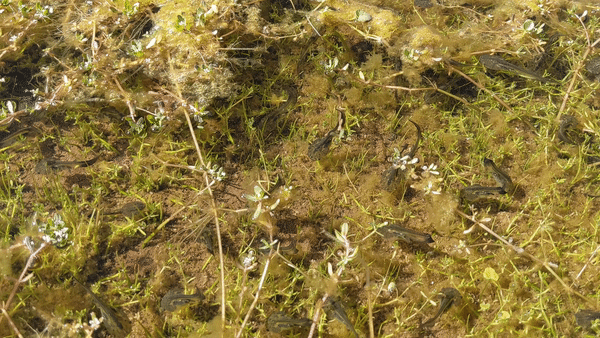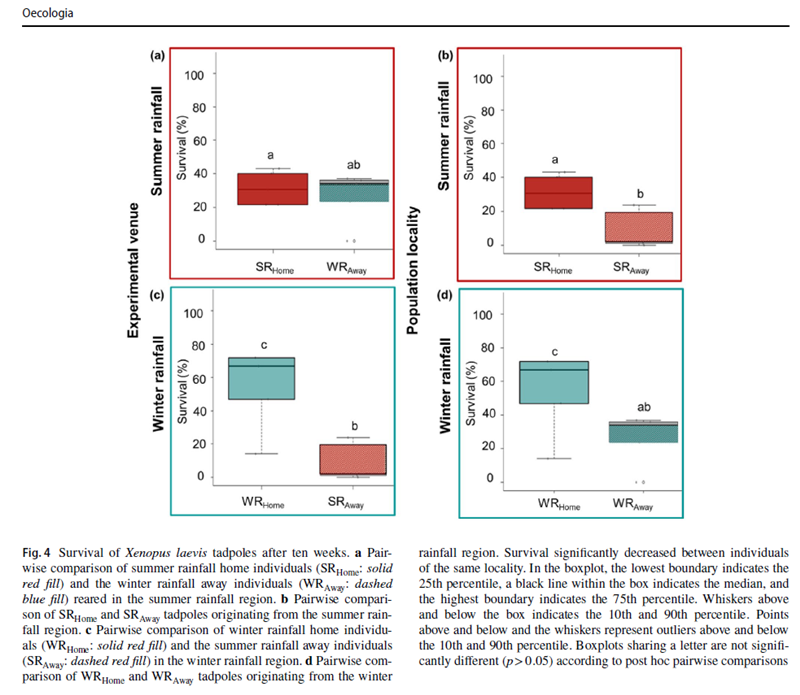Tadpoles in a reciprocal exchange experiment
I have long admired my botanist friends who are able to pick up their study organisms and move them to any climate they like and see how they grow. The effect of climate on animals (including frogs) has been well established, but very few researchers have taken the opportunity to use reciprocal exchange experiments (keeping one population at home while moving the other to a new environment, and vice versa) to investigate the effects of climate on tadpoles. The study design is particularly appealing as for two populations you get results both in their home and away climates. This allows you to compare directly how they have fared in both situations - although I admit that the four way comparisons take time to get used to. South Africa is very unusual in that it has two completely different climates that mean that African clawed frogs (Xenopus laevis) from the southwest breed in the winter (winter rainfall), while those in the northeast breed in the summer (summer rainfall).

Dr Natasha Kruger conducted this experiment as a part of her PhD studies at the CIB in Stellenbosch University and (jointly) in the University of Lyon I. The results, published today, are really interesting.
In the figure above, you can see the number of tadpoles that metamorphose in each of the treatments. The graph in the top left shows that when winter animals (blue line) are moved to the summer rainfall zone , their timing of climax is very similar to that of animals that originate there (red line). However, the bottom left graph shows that in the reciprocal venue, tadpoles from the summer rainfall zone climaxed much earlier. But they did so at a cost. In the figure below (bottom left), you can see that survival of these summer tadpoles in the winter rainfall zone was the lowest.
Read the paper to get more insights on how this reciprocal exchange experiment allowed Natasha to determine that the causes for the differences are both plastic and adaptive.
Kruger, N., Secondi, J., du Preez, L., Herrel, A. & Measey, J. (in press) Phenotypic variation in Xenopus laevis tadpoles from contrasting climatic regimes is the result of adaptation and plasticity. Oecologia. https://doi.org/10.1007/s00442-022-05240-6


